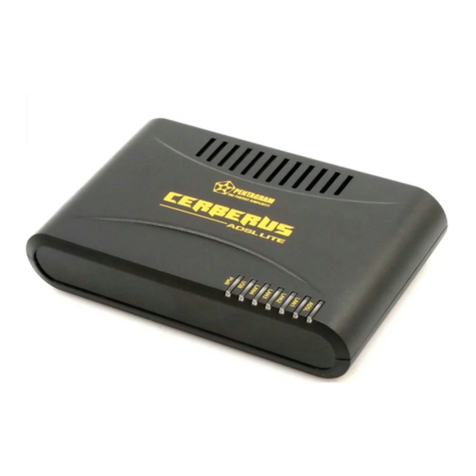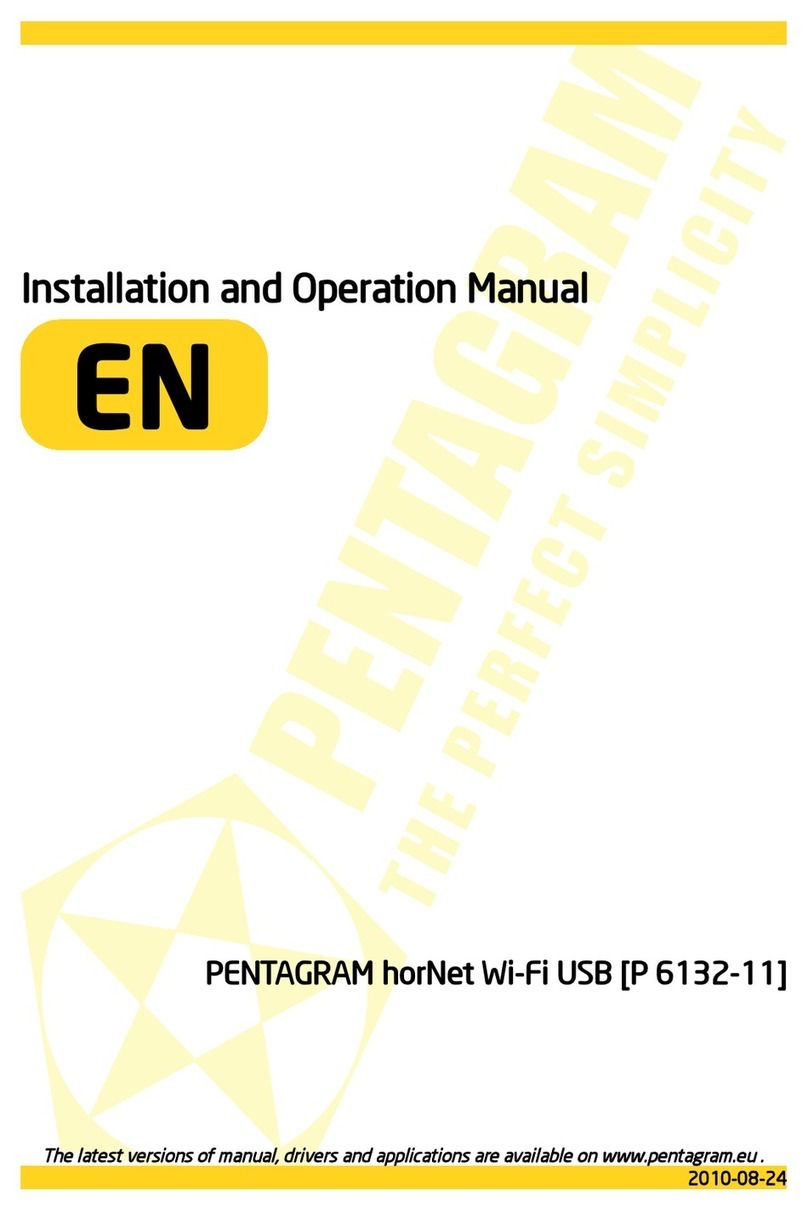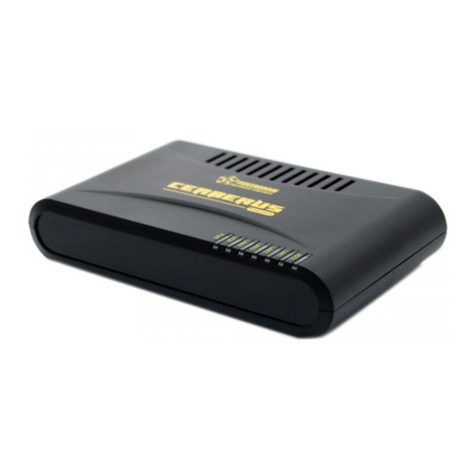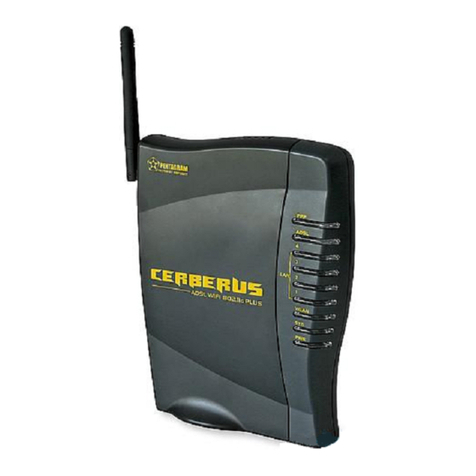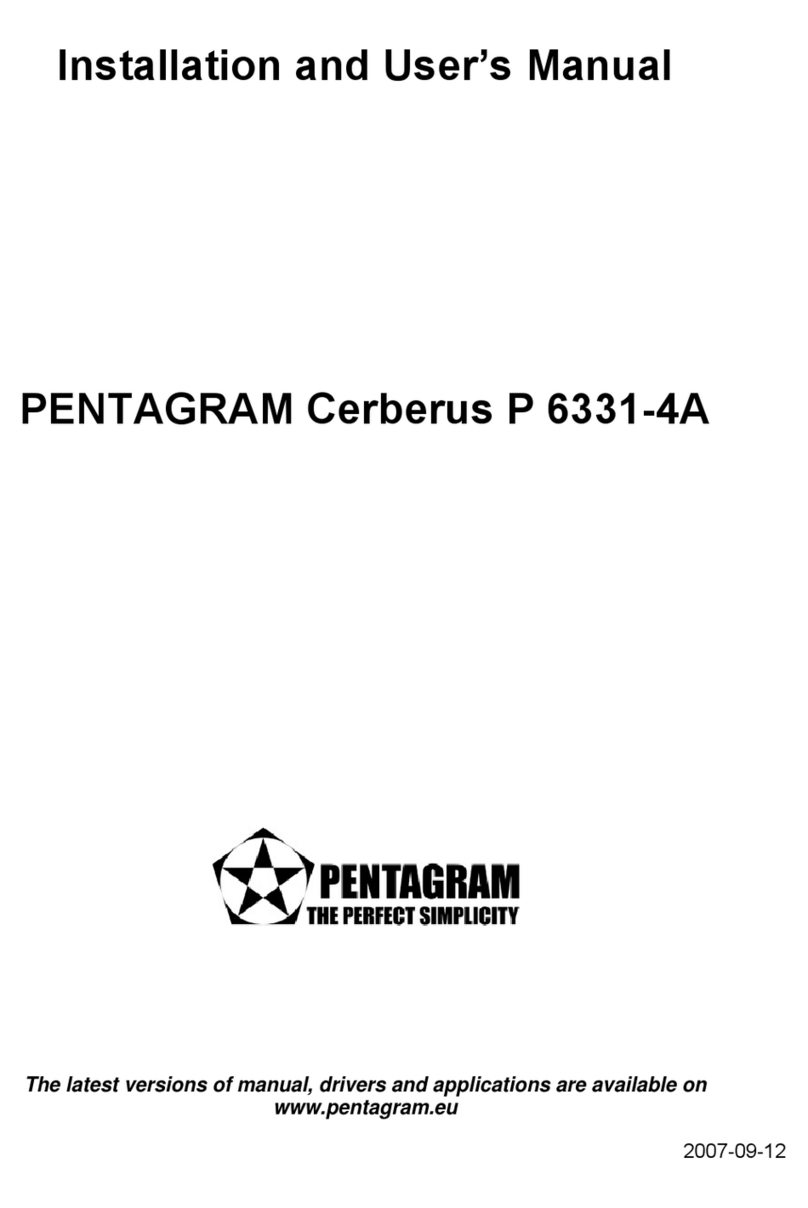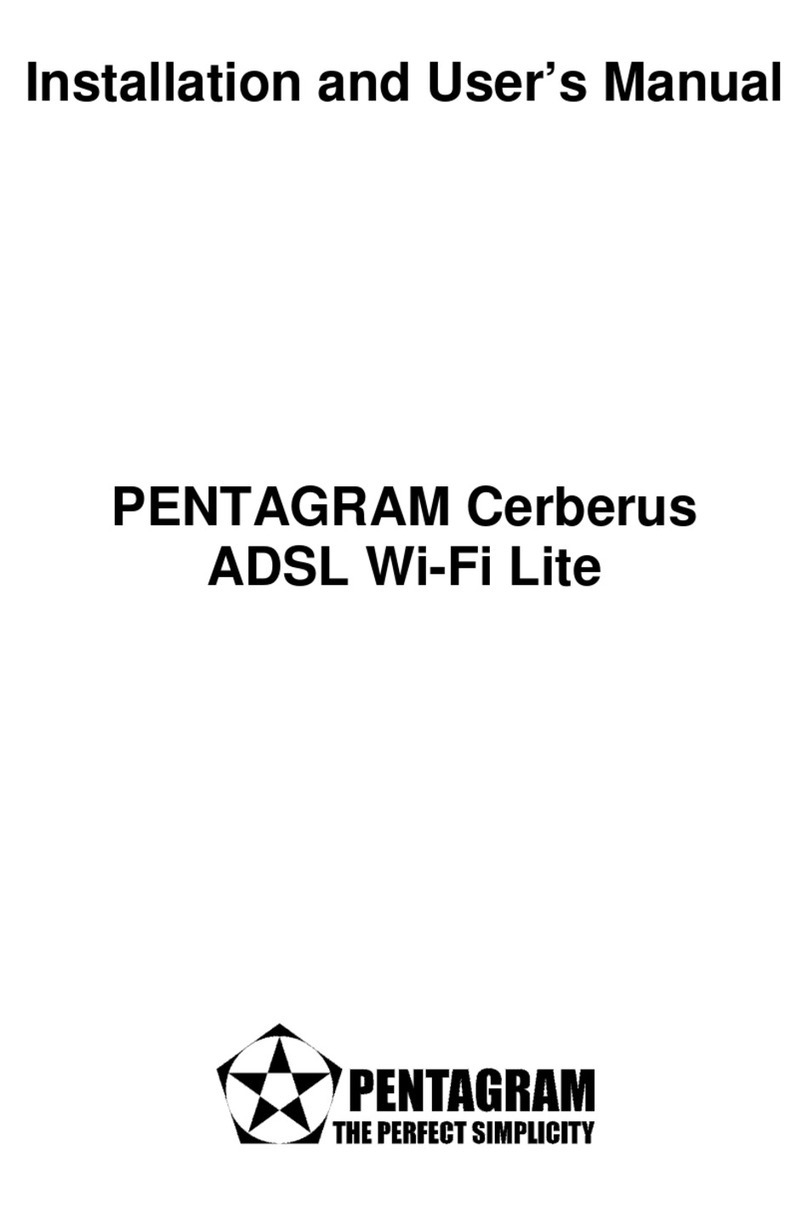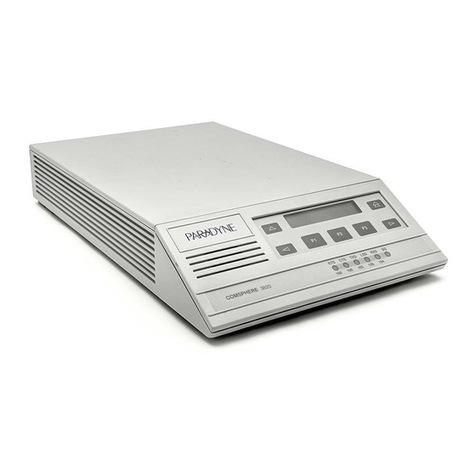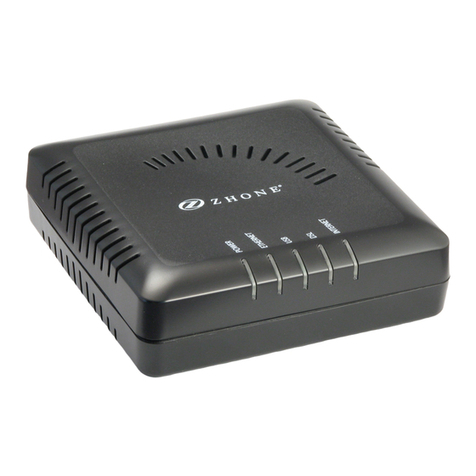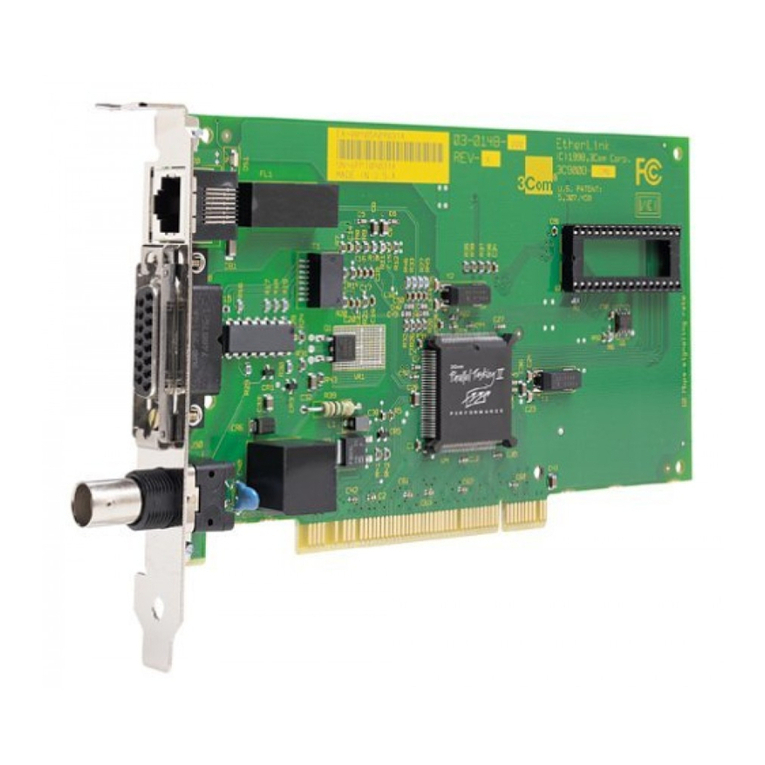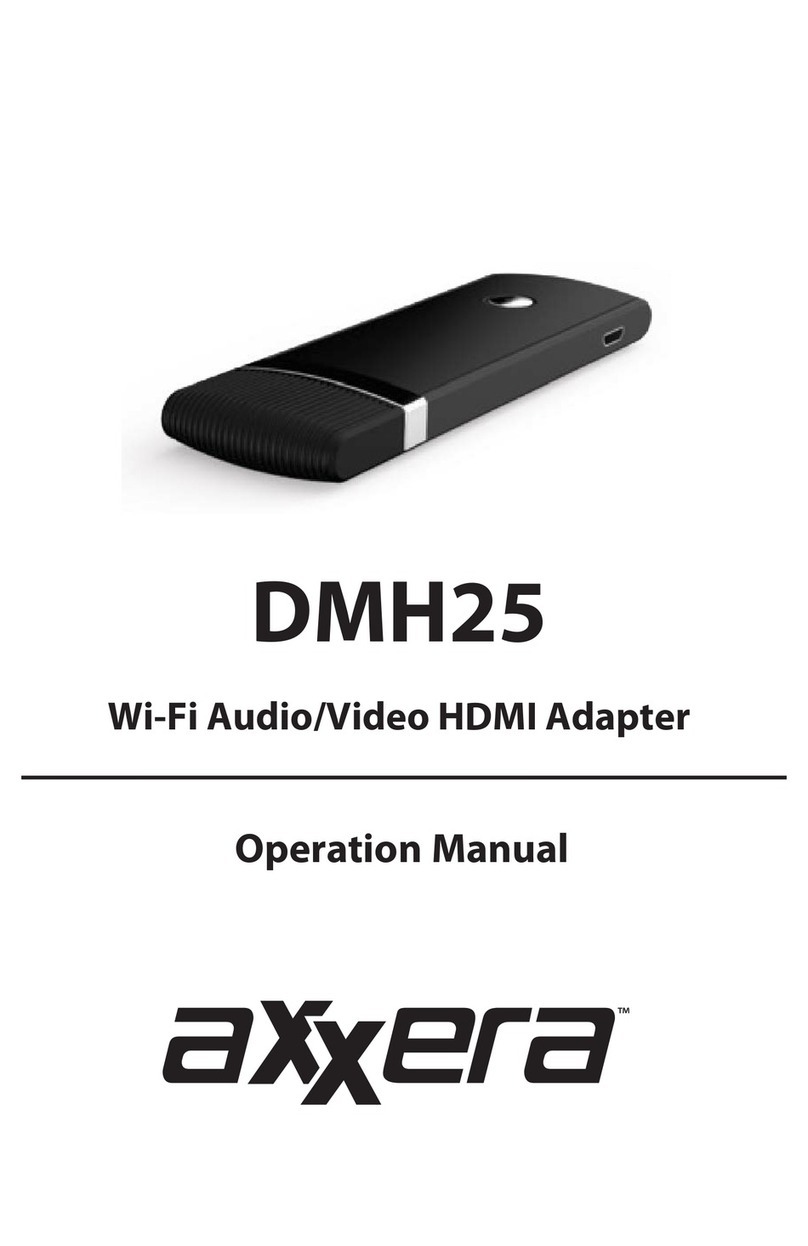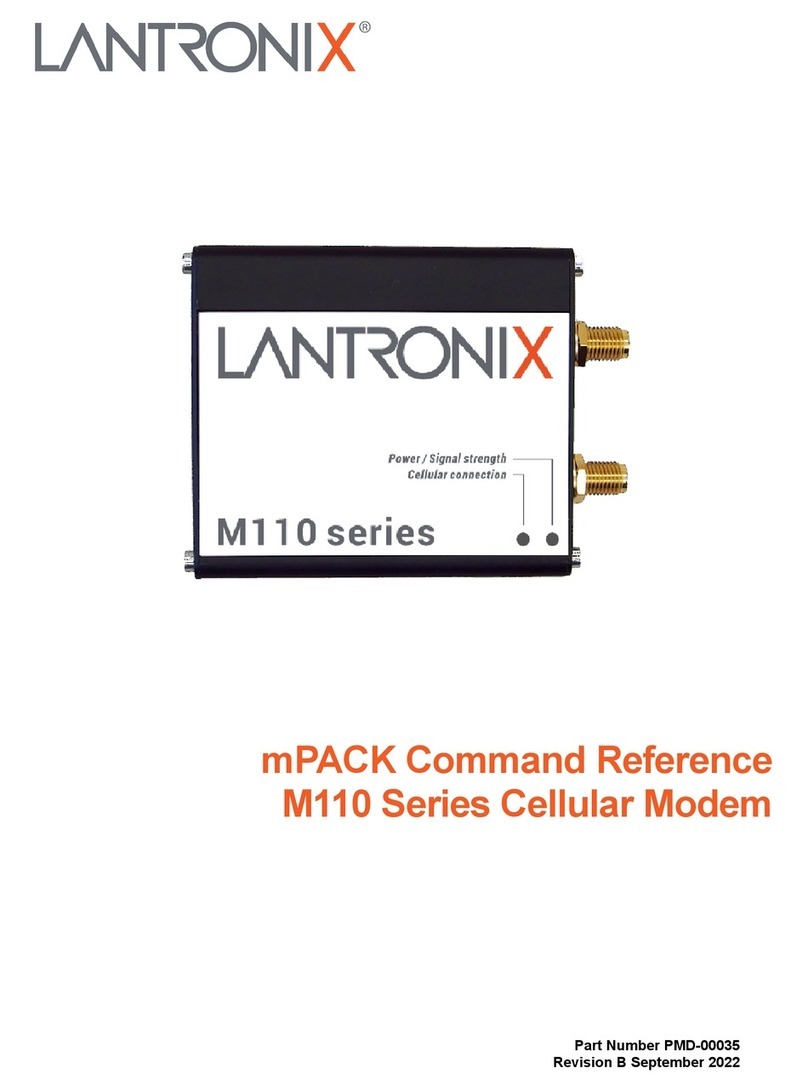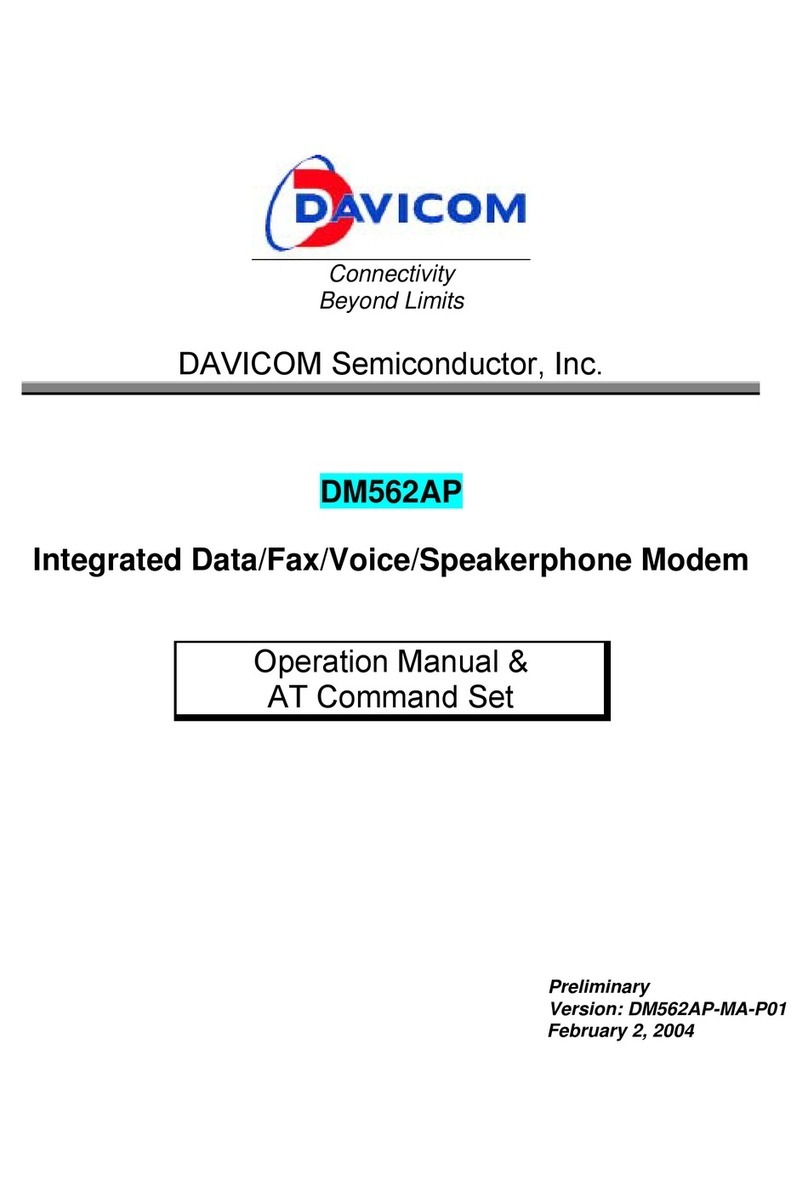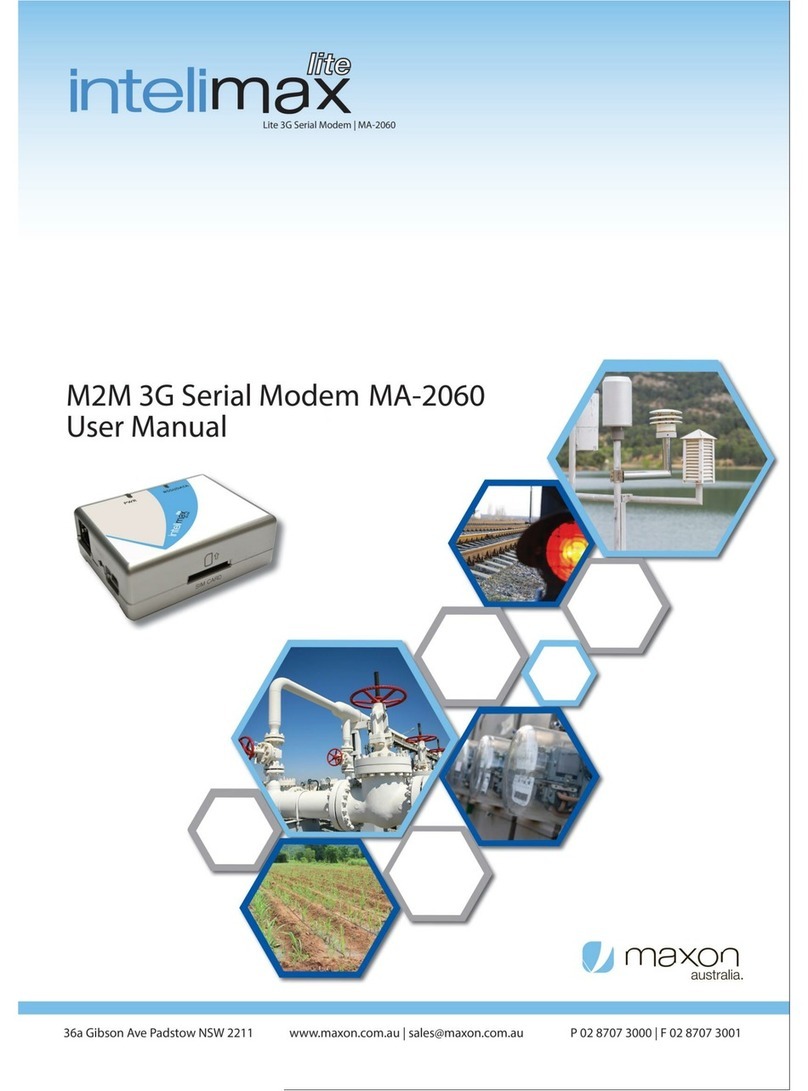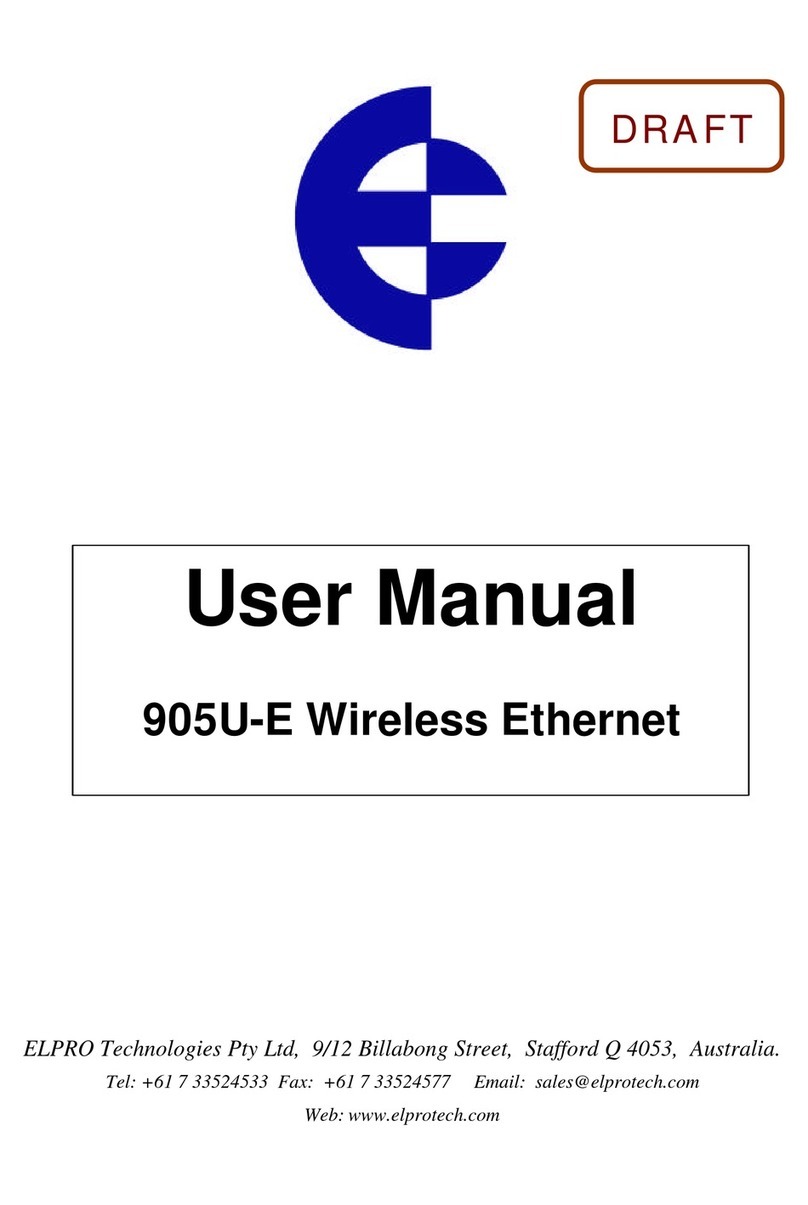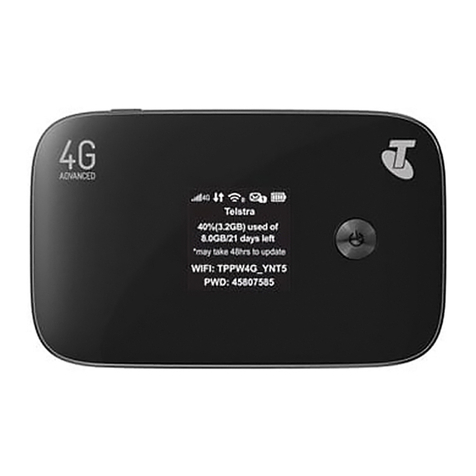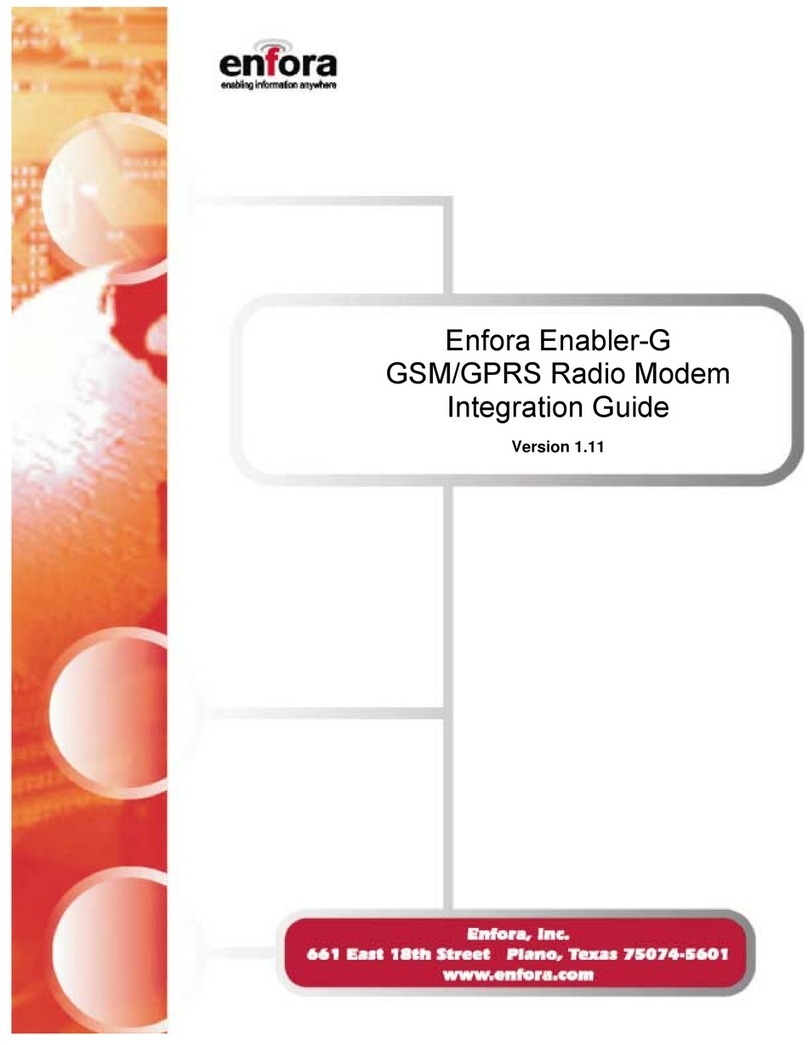
Cerberus P 6311-072
5
Introduction
Thank you for purchasing the Cerberus P 6311-072 ADSL2+ Modem/Router by
PENTAGRAM. Your new router is an all-in-one unit that combines an ADSL modem, ADSL
router, Ethernet network switch and wireless Access Point to provide everything you need to
get the machines on your network connected to the Internet over an ADSL broadband
connection.
The Cerberus P 6311-072 router complies with ADSL2+ standards for deployment worldwide
and supports downstream rates of up to 24 Mbps and upstream rates of up to 1 Mbps.
Designed for small office, home office and residential users, the router enables even faster
Internet connections. You can enjoy ADSL services and broadband multimedia applications
such as interactive gaming, video streaming and real-time audio much easier and faster than
ever before.
Features
•A 4-port 10/100Mbps fast Ethernet switch is built-in with automatic switching between
MDI and MDI-X for 10Base-T and 100Base-TX ports, with auto detection allowing you to
use either straight or cross-over Ethernet cables.
•With built-in 802.11g access point for extending the communication media to WLAN while
providing the WEP, WPA/WPA2 and WDS for securing your wireless networks.
•Network Address Translation (NAT) allows multiple users to access outside resources
such as the Internet simultaneously with one IP address/one Internet access account.
Many application layer gateways (ALG) are supported such as web browser, ICQ, FTP,
Telnet, E-mail, News, Net2phone, Ping, NetMeeting, IP phone and others.
•This protocol is used to enable simple and robust connectivity among stand-alone
devices and PCs from many different vendors, and it makes setting up a network simple
and affordable. UPnP architecture leverages TCP/IP and the Web to enable proximity
networking in addition to control and data transfer among networked devices. With this
feature enabled, you can seamlessly connect to Net Meeting or MSN Messenger.
•The Dynamic DNS service allows you to alias a dynamic IP address to a static hostname.
This dynamic IP address is the WAN IP address. To use the service, you must first apply
for an account from a DDNS service such as http://www.dyndns.org/.
•The Cerberus ADSL2 Wi-Fi Plus (P6311-6) provides an embedded PPPoE client function
to establish a connection. You get greater access speed without changing the operation
concept, while sharing the same ISP account and paying for one access account. No
PPPoE client software is required for the local computer. Automatic Reconnect and
Disconnect Timeout (Idle Timer) functions are also provided.
•Virtual Server: You can specify which services are visible to outside users. The router
detects an incoming service request and forwards it to the specific local computer for
handling. For example, you can assign a PC in a LAN to act as a Web server inside and
expose it to the outside network. Outside users can browse inside the web server directly
while it is protected by NAT. A DMZ host setting is also provided for local computers
exposed to the outside Internet network.
